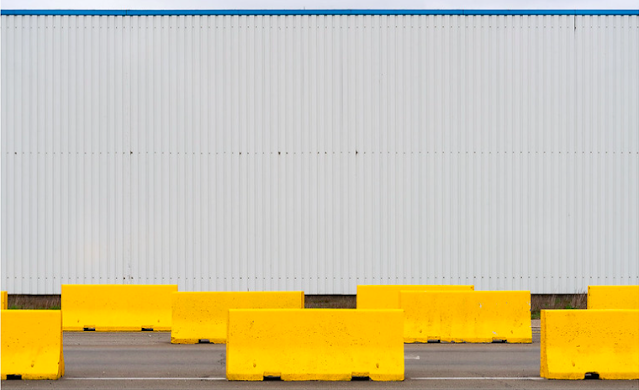Jersey Barriers: Why Are They Called So, Types and Benefits
 |
| photo by Leo Roos on Flickr |
Barriers play a significant role in safety and security. There are different varieties that you must have seen in your daily life. Have you ever seen those large, boxy blocks scattered around construction zones and wondered what they were called? Those are jersey barriers, and in this blog post, you will get a better picture of why they're called that, the different types of jersey barriers for sale, and the benefits of using them.
What Are Jersey Barriers?
Often seen on highways and other busy roads, Jersey barriers are traffic barriers designed to protect drivers and pedestrians from errant vehicles. Also known as K-rail barriers, they are made of concrete and typically have a length of 3.5 meters (12 feet). These barriers are one of the most common traffic barriers in use today.
While They are often used to separate opposing lanes of traffic, they can also protect pedestrians from oncoming traffic. In addition, these can be used to shield vulnerable areas from vehicular damage, such as utility meters or building foundations.
Why Are They Called So?
These barriers, also known as K-rails, have become a common sight on roads and highways across the country. But why are they called Jersey barriers? The answer lies in their history. Initially developed in the 1960s by the New Jersey Turnpike Authority, these barriers were designed to reduce the severity of vehicle accidents.
The barriers get their name because they were first used on the New Jersey Turnpike. Since then, these barriers have been adapted for use in various settings, from construction sites to parking lots. Thanks to their durability and flexibility, these barriers have become an essential part of road safety infrastructure.
Types of Barriers Based on Material Used
There are three main barriers based on the material made from concrete, plastic, and steel.
1. Concrete Barriers
Concrete barriers are the most common type of barrier. They are made from cement, water, and aggregates such as sand or gravel. Concrete barriers are solid and durable, making them ideal for high-traffic areas. However, they are also cumbersome, making them difficult to move and install.
2. Plastic Barriers
Plastic barriers are made from materials, including high-density polyethylene (HDPE) and recycled plastic. Plastic barriers are lightweight and easy to transport and install. However, they are not as durable as concrete barriers and can be damaged by UV rays or extreme temperatures.
3. Steel Barriers
Steel barriers are made from sheets of steel that are welded or bolted together. Steel barriers are robust and durable, making them ideal for high-traffic areas. However, they are also cumbersome, making them difficult to move and install.
Types of Jersey Barriers Based on Design and Shape
There are many different barriers, each designed for a specific purpose.
The most common type is the W-beam, which separates traffic on highways and other high-speed roads. These barriers are usually made from steel or concrete and can be up to 12 feet long.
Another common type of jersey barrier is the C-channel, which protects against vehicle collisions in lower-speed areas such as parking lots and school zones. These barriers are shorter than W-beams and are often made from recycled plastic.
M, U, and J-shaped barriers are typically used in construction zones to protect workers and equipment from oncoming traffic. Whatever the shape or design, jersey barriers play an essential role in keeping drivers and pedestrians safe.
Benefits of Using These Barriers
These barriers are an essential part of road safety infrastructure. Thanks to their durability and flexibility, these barriers have become an essential part of road safety infrastructure. Here are some of the benefits of using them:
• These barriers can separate opposing lanes of traffic, protecting drivers and pedestrians from oncoming traffic.
• They help shield vulnerable areas from vehicular damage, such as utility meters or building foundations.
• Jersey barriers are easy to transport and install, making them versatile road safety tools.
• They are made from various materials, including concrete, plastic, and steel, making them suitable for use in various settings.
Things To Keep In Mind While Setting up
While these barriers are an essential tool for road safety, there are a few things to keep in mind while setting them up:
• Make sure the barrier is the appropriate size and shape for the area you are using it in.
• Be sure to anchor the barrier securely so it does not move or topple over in the event of a collision.
• In high-traffic areas, use a barrier made from a durable material such as concrete or steel.
• In lower-speed areas, you can use a lighter-weight barrier made from plastic or recycled materials.
No matter what type of jersey barriers for sale you choose, jersey barriers can provide an essential layer of protection against vehicular accidents. If you are looking for a way to improve the safety of your property, consider using jersey barriers. Thanks to their many benefits, these barriers can help keep drivers and pedestrians safe.
